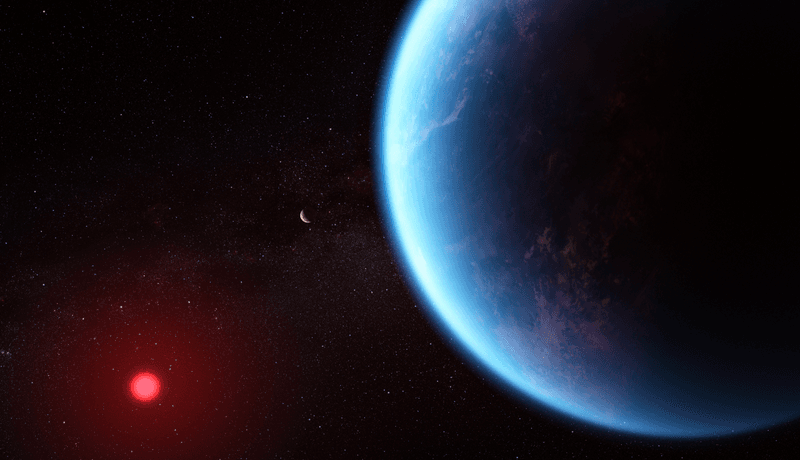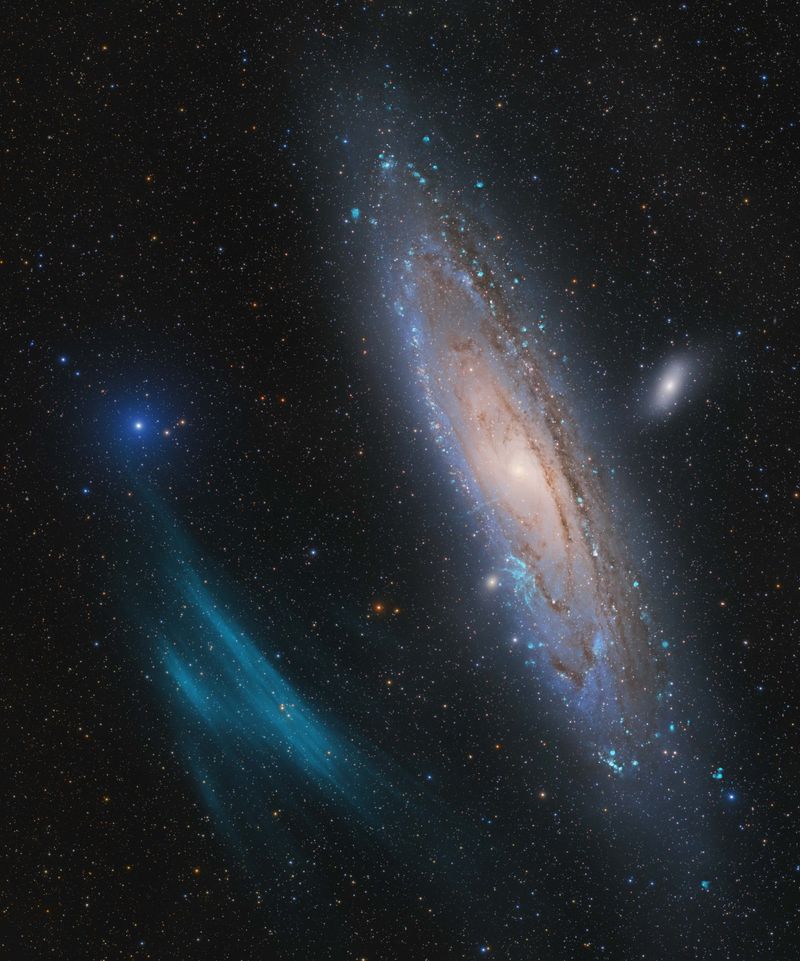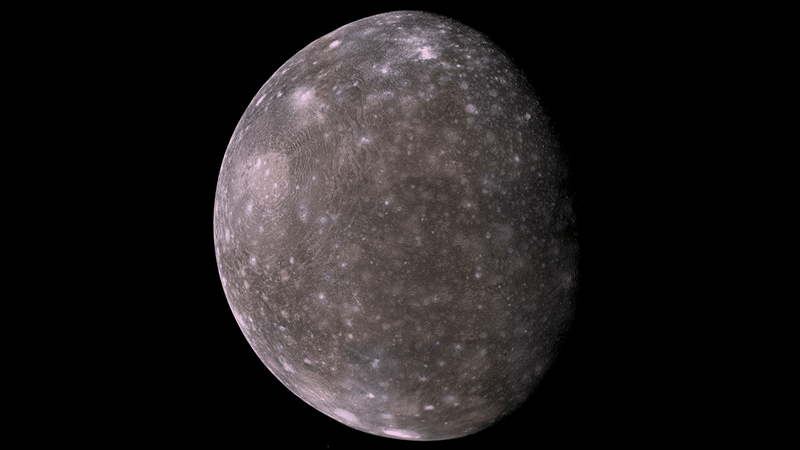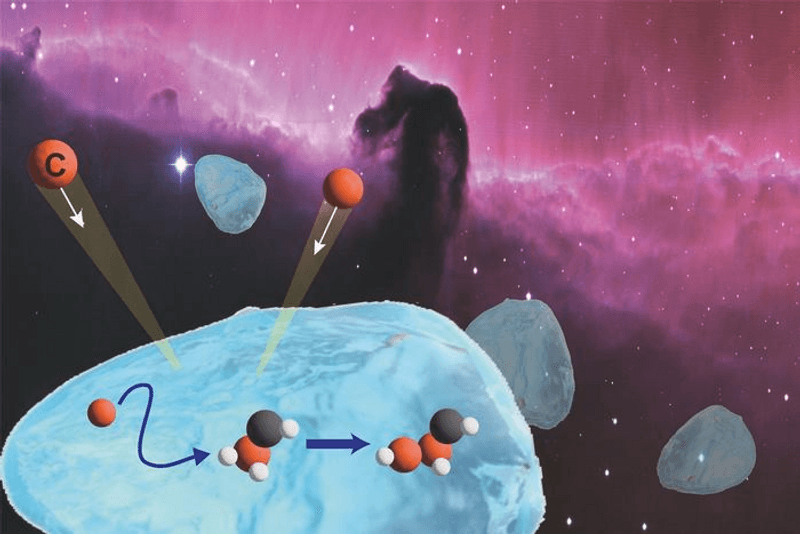The JWST has added to our knowledge of the first “habitable zone” planet beyond the Solar System around which we detected atmospheric water. The spectrum the space telescope obtained shows strong evidence of carbon dioxide and methane, both gases that can have biological origins but are also common without. More significantly, but much more tentatively, it also found hints of dimethyl sulfide (CH3)2S, a gas only produced by living things, at least on Earth.
Light from its parental star K2-18 shines through K2-18b’s atmosphere every time it passes across the star’s face from our vantage point. Gasses in the atmosphere block specific wavelengths, creating a unique fingerprint that reveals their presence.
The JWST has used this fingerprint to add methane and carbon dioxide to the previously identified water. It has also found something happening at 3.3 µm, one of the wavelengths associated with dimethyl sulfide, but other gasses absorb at wavelengths close enough to this that the detection is uncertain.
More observations may settle this question. Each time K2-18b passes transits its star there is another opportunity to collect more light, and adding these observations together could make for a clearer signal. The analysis was performed on observations of two transits, each of which yielded the equivalent of eight transits observed by Hubble.
Considering the excitement it has produced among astronomers, K2-18b really needs a catchier name, although its alternative designation (EPIC 201912552 b) is worse. In the meantime, however, don’t let the boring nomenclature blind you to this planet’s significance. Since its discovery by the extended Kepler mission, the planet orbiting a star 124 light years away has been marked as something special, so it was inevitable the JWST would prioritize it for attention.
K2-18b has a radius 2.6 times the size of Earth, but a mass 8.6 times greater. That makes it less dense than a rocky planet, but denser than a gas giant like Neptune. It’s thought to be covered in water surrounded by a thick hydrogen-rich atmosphere. Astronomers have named this class of planets Hycean (Hydrogen-ocean) and some think it might be easier to find signs of life in their atmospheres than those of more Earth-like worlds. K2-18b is considered the first likely Hycean planet, but until now its ocean has been speculative.
Planetary scientists predicted Hycean planets should have methane and carbon dioxide in their atmospheres, but little to no ammonia, and this is what the JWST found. The combination indicates a planet well-suited to life, but we will need to find more exotic molecules to know biology is occurring there. Dimethyl sulfide should be one of the easiest to spot.
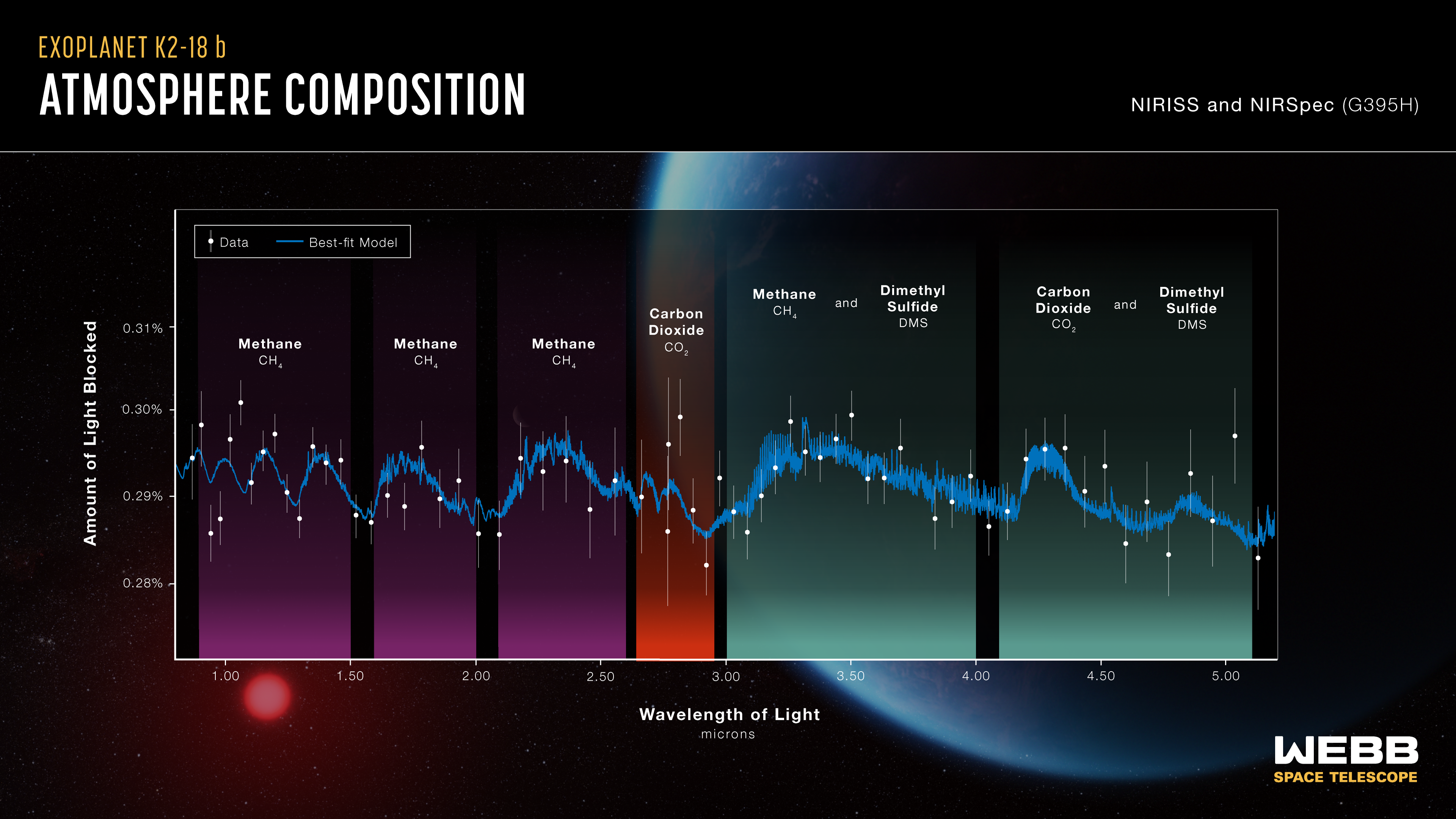
"Although this kind of planet does not exist in our solar system, sub-Neptunes are the most common type of planet known so far in the galaxy," said Dr Subhajit Sarkar of Cardiff University in a statement. “We have obtained the most detailed spectrum of a habitable-zone sub-Neptune to date, and this allowed us to work out the molecules that exist in its atmosphere.”
In 2019, studies of K2-18b’s atmosphere using Hubble detected signs of water vapor, the first time this had occurred on a planet cool enough to also have a liquid ocean. Nevertheless, this was all slow going. Habitable zone planets require longer orbits than the overheated worlds we find most easily. Even with a red dwarf as its parent star, it’s a 33-day wait between transits, posing a problem for Hubble, which needed to combine so many opportunities to even have a chance of finding anything.
K2-18b is considered so important that observations of future transits are booked into the JWST’s schedule, despite all the competing calls on its time.
"Our ultimate goal is the identification of life on a habitable exoplanet, which would transform our understanding of our place in the universe," said first author Professor Nikku Madhusudhan of Cambridge University. "Our findings are a promising step towards a deeper understanding of Hycean worlds in this quest."
The study has been accepted for The Astrophysical Journal Letters, and a preprint is available on ArXiv.org

